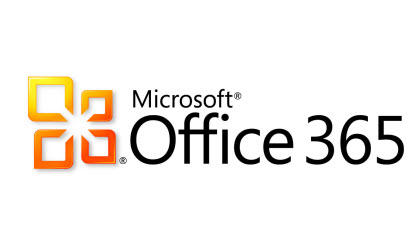Non-profits large and small have been in cloud evaluation mode for the past couple of years. Every conversation with every organization we run into involves, early in the discussion, a review of their cloud application options. Inevitably, business applications are the first or second item on the list, and this means Google Apps or Microsoft Office 365. Where the Microsoft vs. Apple conversation ended, the Microsoft vs. Google has taken over. In this blog post I’ll cover some very recent updates as well as some important points to help you in your decision making.
It may seem an obvious statement, but Office 365 and Google Apps are not the same product. It can be difficult to differentiate, beyond the surface, what makes these two products unique. Furthermore, it is not easy to figure out which product is best suited for your organization.
Cost: Yes, we have to start talking about money. I’m usually not one to use this argument in the early selection process, but I think in this case it is warranted. Six months ago Office 365 was heavily discounted for non-profits, but it still didn’t beat Google Apps, which was free. Recently, that changed as Microsoft announced new pricing for charity that made all but one product free for eligible non-profit organizations. So, money is no longer a prominent issue. But what about the cost of migration over to Office 365? Well, if you tackle this internally your cost will involve the time investment, and if you outsource it there will be a cost to migrate users. So yes, there is a cost involved here and the migration is not necessarily straightforward especially for a first timer. This is something to think about when planning.
Selection: Here is where it gets a bit tricky. I’ve been noticing that organizations are making their product decisions based primarily on their personal likes and what they are most familiar with, rather than to strategically determine what will work best in the near and long term for the organization. Essentially, individuals are used to Gmail and therefore make the decision that it is a superior email application that will work well for everyone. That impression produces the misconception that a) Gmail and Outlook are essentially the same and b) their experience with word processing and spreadsheet applications can be easily transferred. Not so. The email products alone are fundamentally different.
Google and Microsoft take extremely different approaches to email with distinguishing factors that exist within their other applications. One simple example is Google’s filter approach vs. Microsoft’s folders. In Gmail, you don’t move things into folders, instead you tag them so as to filter them from view. Marking an email as “archive” doesn’t move it into a folder, it just tags it as archive. If you want to see your archived email, you change the filter view and voila, there is your archived email. Microsoft continues to use folder structures for most everything, although their filtering has become more sophisticated and easier to use. Still, the paths to information management are distinctly different.
So how do you choose? Here are some simple questions to ask that will help you assess which direction may be right for you:
- Do you currently use Microsoft Outlook 2010 (or higher)?
- Do you have a Microsoft Exchange email server or service (hosted) for storing your email?
- Do you share calendars and contacts in Outlook?
- Do you plan to continue to use Microsoft Outlook on your devices?
If you answered yes to all of these questions, I would say your organization should seriously consider Office 365 over Google Apps. If you think that Google is a better fit for your organization you should know that there are specific limitations when using Outlook with Gmail. Here is just a partial list:
- Out of Office in Outlook only works if Outlook is open and running. It doesn’t integrate with Gmail so you have to set it up separately
- If you utilize shared mailboxes, this feature won’t work in Outlook with Gmail (it is possible with Gmail online)
- Outlook will not be able to access group features like Google calendar or groups
- Outlook will not be able to match users to mailboxes in Gmail
Are these hurdles that your organization can get over? It’s very possible that they are, so long as it is a discussion. You can avoid some long term kicking and screaming if you engage your staff about what makes the most sense.
Final thoughts: With ample offerings for free trials, conducting performance evaluations for both products across a couple of users, would go a long way. It is always helpful to see how common every day tasks will change. If you’re in education and considering Office 365, be sure to have someone in development, as well as the registrar or admissions try it out. In a non-profit the development department and the program team should be included in the evaluation process. These groups may have email integration needs that will come to light during the pilot, and further demonstrate the possible integration challenges as well as any additional migration steps that need to be considered.

